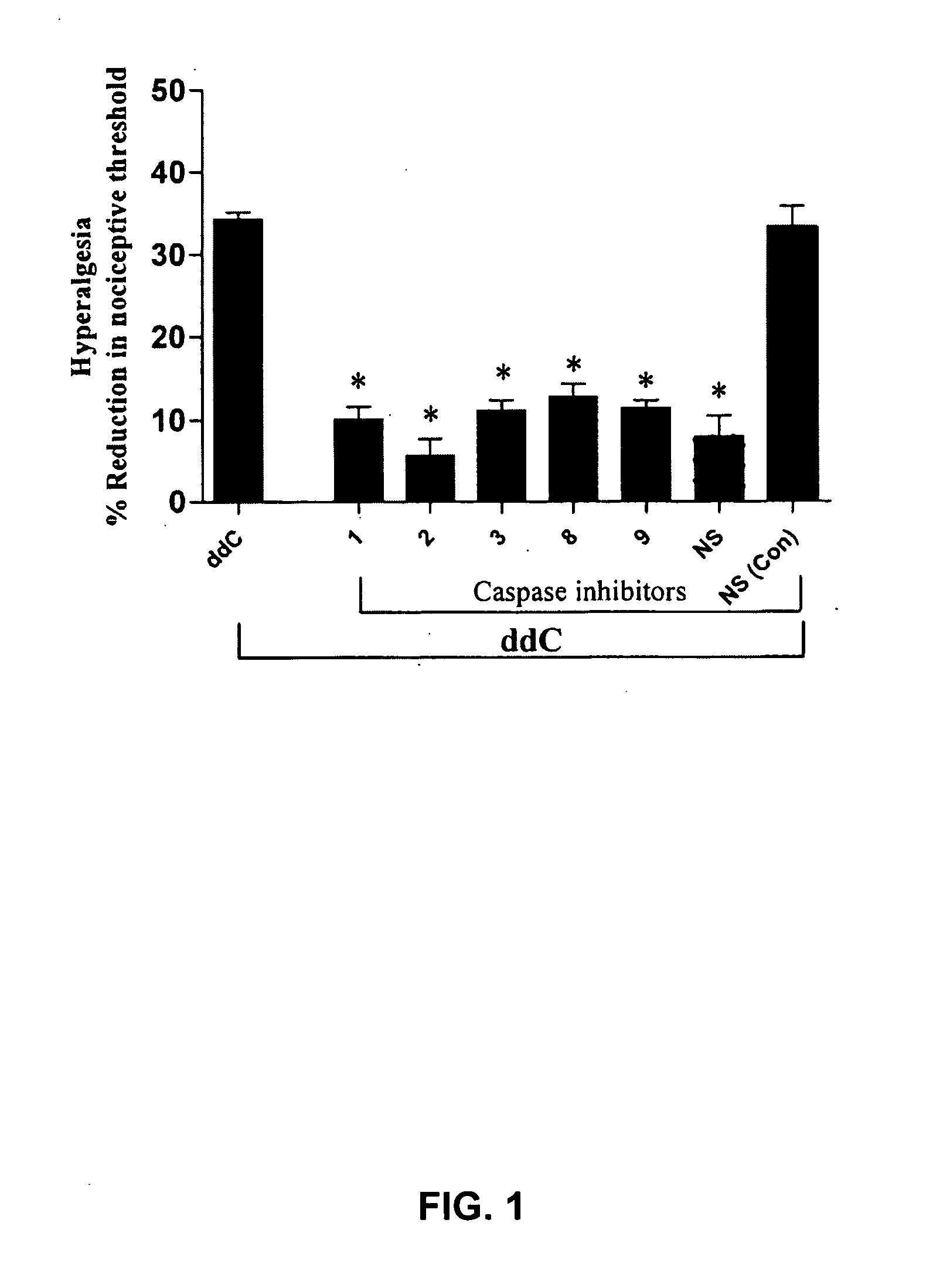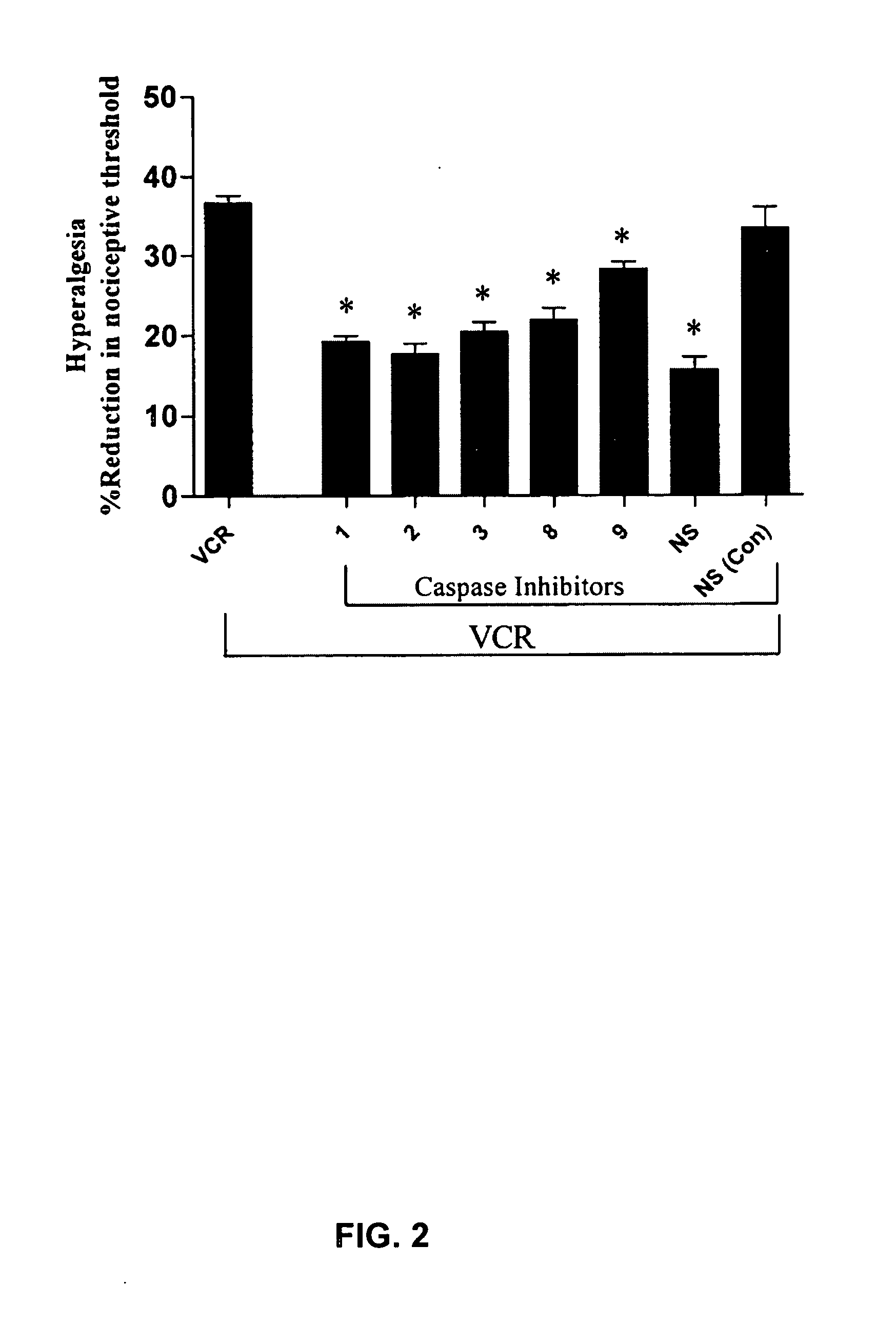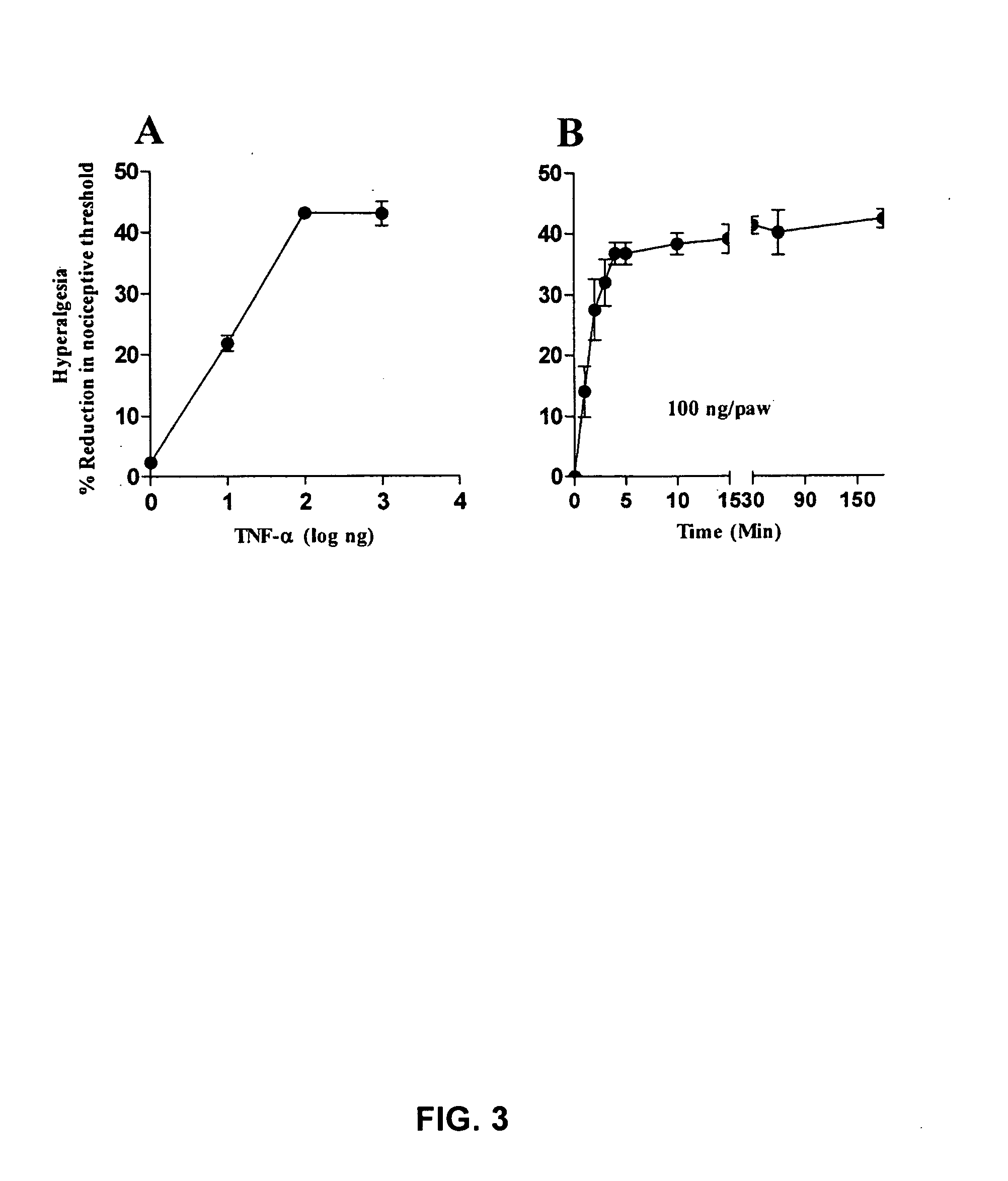Treatment of pain by inhibition of caspase signaling
a technology of caspase signaling and pain, applied in the field of pain treatment or amelioration, can solve the problems of pain syndromes that are debilitating and extremely difficult to treat, cleavage of certain cellular protein substrates, and impairment of tissue homeostasis, and the end of the cell damag
- Summary
- Abstract
- Description
- Claims
- Application Information
AI Technical Summary
Benefits of technology
Problems solved by technology
Method used
Image
Examples
examples
[0057] The following are representative examples of the invention. However, they are only examples: the invention is not limited to them.
Methods
Animals
[0058] Experiments were performed on 220-260-g male Sprague-Dawley rats (Charles River, Fremont, Calif., USA). Rats were housed in groups of 2 under a 12-h light-dark cycle. Food and water were available ad libitum. Experiments were carried out in accordance with NIH regulations for the care and use of animals in research, and under approval of the Institutional Animal Care and Use Committee of the University of California, San Francisco.
Pain-related Behavior
[0059] The nociceptive mechanical flexion reflex was quantified with an Ugo Basile Analgesymeter® (Stoelting, Chicago, Ill.), which applies a linearly increasing mechanical force to the dorsum of the rat's hind paw. Mechanical paw-withdrawal thresholds were determined in control (saline treated) and test agent treated rats. Four readings were taken at 5-min intervals and t...
PUM
| Property | Measurement | Unit |
|---|---|---|
| Mass | aaaaa | aaaaa |
| Mass | aaaaa | aaaaa |
| Power | aaaaa | aaaaa |
Abstract
Description
Claims
Application Information
 Login to View More
Login to View More - R&D
- Intellectual Property
- Life Sciences
- Materials
- Tech Scout
- Unparalleled Data Quality
- Higher Quality Content
- 60% Fewer Hallucinations
Browse by: Latest US Patents, China's latest patents, Technical Efficacy Thesaurus, Application Domain, Technology Topic, Popular Technical Reports.
© 2025 PatSnap. All rights reserved.Legal|Privacy policy|Modern Slavery Act Transparency Statement|Sitemap|About US| Contact US: help@patsnap.com



